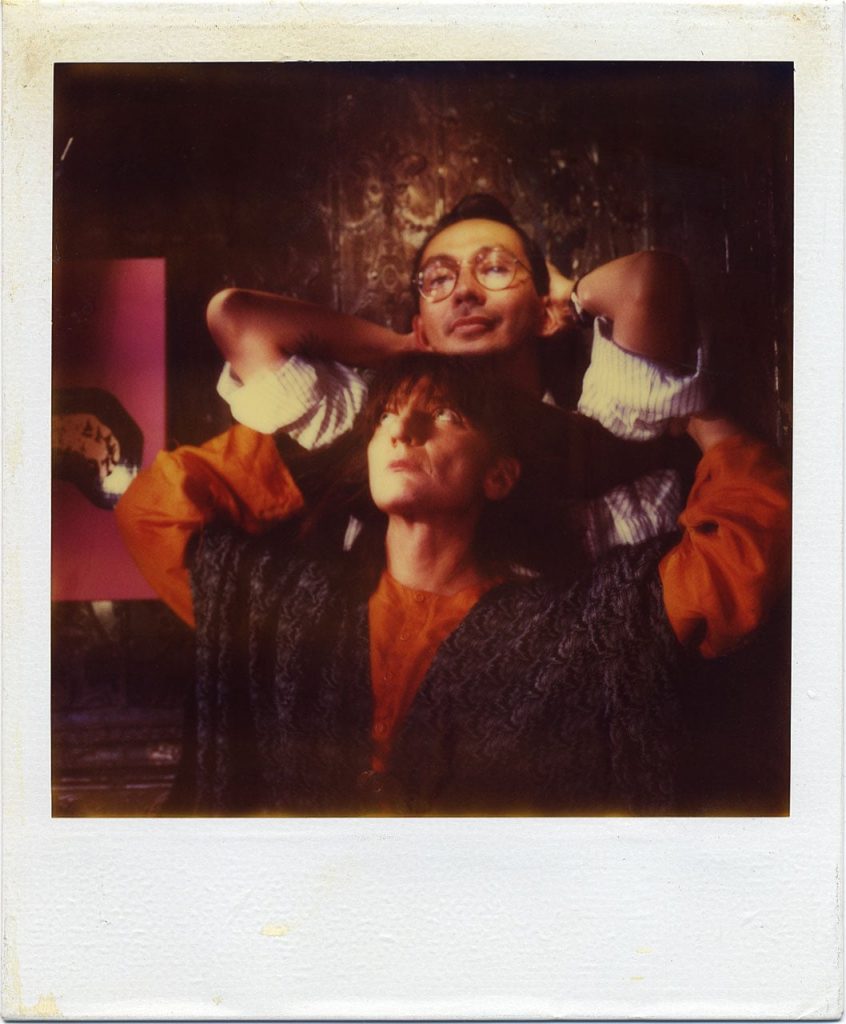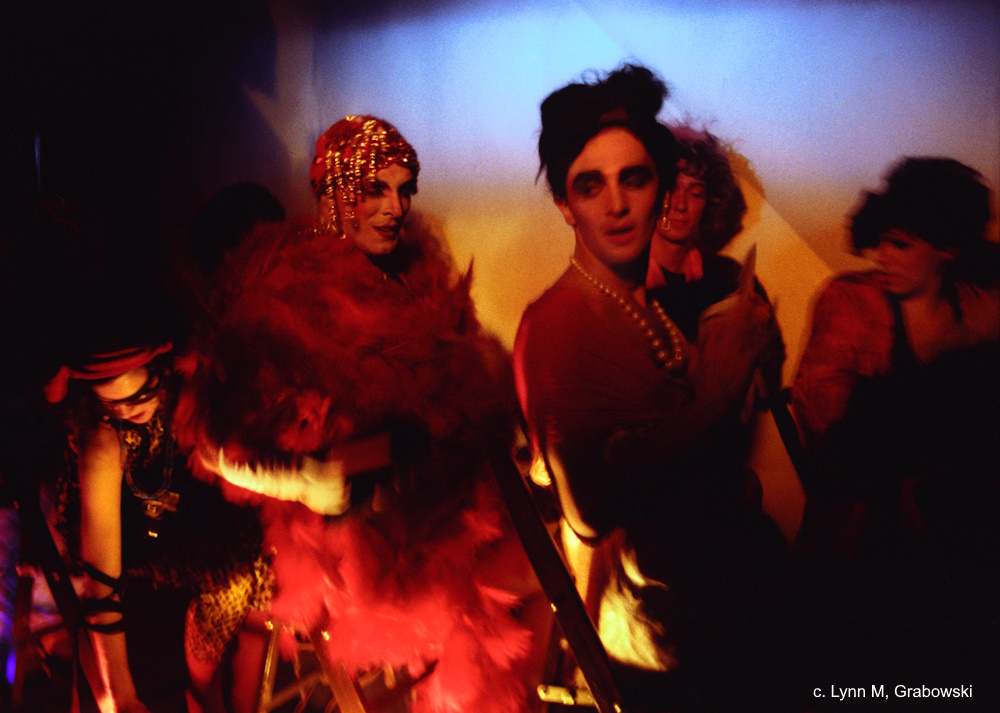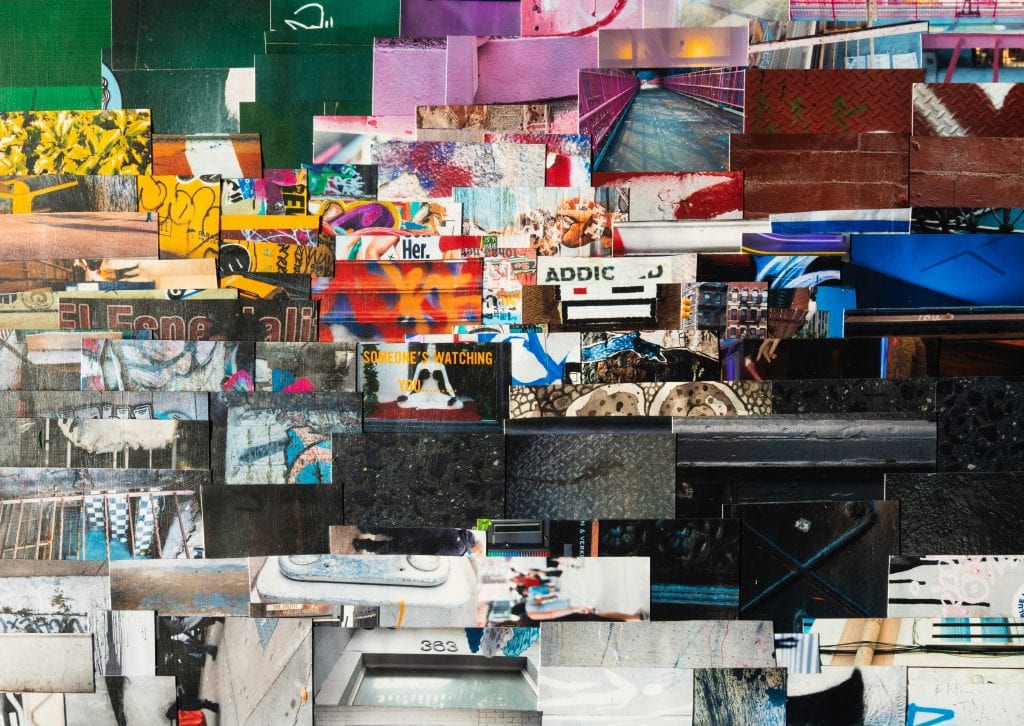
As new generations rediscover New York in the late 80s, in his essay Bill Stelling, gallery director of 56 Bleecker Gallery and co-curator of Love Among the Ruins, writes about the gallery and the era of AIDS with truthfulness and clarity.
Art Lives Forever
Love Among the Ruins is a memoir written on the walls of a gallery. Like many, I remember a time of art, sex, and death. There were corollaries of cocaine and heroin, and walks down to Avenue D to visit Chuleta, or whomever else happened to be standing on that corner. You would run into famous people there. This show isn’t about scholarly documentation; it ranges far into the subconscious of that period, showing the world through the creativity of its inhabitants. You will see works by people who never had a show at 56 Bleecker, but who were part of its world.
The middle of the 2010’s has been about rediscovering the 1980’s. Jean-Michel has assumed mythic status, even though he was a petulant brat, a radiant child of drug-induced paranoia. If you knew Jean, you will understand. Area, CBGB, Fun Gallery, and Club 57 are the subject of museum retrospectives. I try to remember what we were nostalgic about during the 80’s. I think we disdained nostalgia, but I am not sure. All we were sure about was that art lived forever.
By the late 80s, the relatively dewy-eyed East Village art scene of 1982 had been invaded by fashion and media. 56 Bleecker stepped slightly out of the neighborhood and embraced this confluence of art, trend, nightclubbing, performance, and style. It also was caught in the vortex of AIDS, as when Keith stopped by the gallery to say his final farewells. We showed a hundred drawings by Vittorio Scarpati, done from his hospital bed, as he was being kept alive on a ventilator. He was not able to attend his opening exhibition.
I blame it on Patrick Fox. He started this wild, mad gallery in the ruins of the Anderson Theater, attracting the cool, the hip, and the talented. He shaped its aesthetic, and when he walked away from his eponymous gallery after the move to Bleecker Street, all that was left was the Tin Room.
I was brought in by Dean Rolston and Jason Vass like a janitor to clean up broken glass. The name was changed, and Dean wanted the place to have a slightly more pretentious presence. He separated the “56” from the “Bleecker,” as they do in France, and thus 56, Bleecker Gallery. If you knew Dean, you will understand. Our business cards had to be square; the graphics had to be magnificent. We can thank David Pace for that. I look at mine now and am glad that it still pulses with that era.
A typical day: Unlock the gallery while a row of human scarecrows hidden under scaffolding are lit up by crack pipes across Crosby Street. Move aside the garbage that Joe’s Carting Service has piled up in front of the door because we refuse to pay for garbage pickup. Get the wood stove going so we don’t freeze to death. Wait for the inevitable visit from Rene Ricard, who has already made his rounds of Helen, Jacqueline, and Sylvia for his “breakfast” money. Depending on his daily catch, he either hits us up, or brings a Styrofoam container of Chinese food which he eats standing up. Later that night, we run into him at William Rand’s loft, mainlining art history. We love and fear Rene. If you knew him, you will understand. For many of us, Rene lives forever.

Marvin Gaye’s “Sexual Healing” was Rene’s soundtrack, but I still hear Scott Covert singing “If there’s a cure for this, I don’t want it…” as he wandered the halls of Cabrini, visiting friends who would become memories. David LaChapelle’s beloved Louis graces one of our gallery invitations. There is some irony in knowing that Iggy Pop still lives on as a musician and rock icon while Stephen Sprouse is gone. Mark Sink, our de facto house photographer, documented them. Through him, they live forever in the exhibition catalog.
Not everybody died, though. Jeff Perrone, who curated a show called Dwelling, spoke eloquently about issues as relevant today as they were in 1989. He has again honored us by creating a show within this show. Elizabeth Peyton, whom we met in her tiny apartment next door to The World, had a very early show in the Tin Room. Of course, nobody got it. Artists like Graham Gillmore and Scott Kilgour have moved away from New York and continue to make important, relevant work. The magical Austé may live in Connecticut, but downtown lives forever through her fierce women.
I follow Penny Arcade on Facebook, and lately her posts have been rants about the homogenization of the East Village. If you know Penny, you will understand her anger. Her village has been bulldozed by somebody who probably lives in Dubai. It’s hard to reconcile the corner of 1st and First—where bums used to cook stolen chicken parts on fires of broken furniture in garbage cans—with the French restaurant now there and its $42 à la carte entrées. That ruined landscape that we inhabited is gone. Through this exhibition, I am hoping that the beautiful, ugly, destructive, and creative world we remember lives on forever.
—Bill Stelling, August 2017
Love Among the Ruins was created by Some Serious Business for Howl Happening: An Arturo Vega Project. The exhibition opens on September 10th and continues until October 6th.



